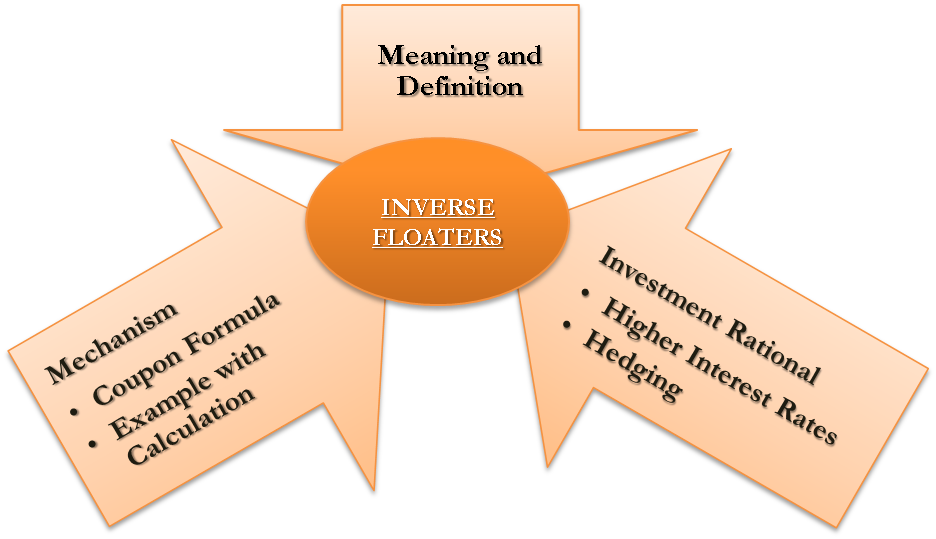Meaning and Definition
Inverse floating-rate bonds, more commonly known as inverse floaters, are actually opposite to traditional floating rate bonds or floaters. To understand inverse floaters, it is important to understand floating rate bonds.
Floating rate bonds or floaters are bonds that have coupon payments that reset periodically according to some reference rate such as LIBOR, 5-year Treasury Yield, etc. There are two components of coupon rates, i.e., reference rate & fixed-rate (margin). In floaters, the coupon rates have direct relation to reference rates, i.e., coupon rates go in the same direction as the reference rate. For example, if the reference rate increases, the coupon rate will also increase & vice versa.
As opposed to floaters, inverse floaters are bonds whose coupon rate moves in the opposite direction from the change in reference rate. Again the reference rate may be LIBOR, EURIBOR, US Treasury Rates, etc. This means that if the reference rate increases, the coupon rate will decrease & vice versa.

How does Inverse Floater Work?
Working of an inverse floater is quite straightforward. The coupon rate is calculated on every coupon reset date by subtracting the reference interest rate from a constant. So its formula looks like the following:
Also Read: Floating Rate Bonds
Coupon Formula for Inverse Floater
Coupon Rate = Fixed-rate K – (Coupon Leverage L x Reference Rate R) = K – (L x R)
Example with Calculation
Suppose-
Fixed-Rate = 20%,
Coupon Leverage = 2 &
Reference Rate = 3-month Treasury bill rate
Then,
Coupon Rate = 20% – (2 x 3 month treasury bill rate)
Now suppose we want to calculate the coupon rate as on March 5, 2018
3-month treasury bill rate as on March 5, 2018, = 1.67%
Therefore Coupon Rate = 20% – (2 x 1.67%) = 20% – 3.34% = 13.66%
From the formula, we can come to a conclusion that when the reference rate goes up, the coupon rate will go down, given the reference rate is deducted from the coupon payment. Similarly, as reference rates fall, the coupon rate increases because less is taken off.
In the above example, notice that if the 3-month Treasury bill rate exceeds 10%, then the coupon formula would produce a negative coupon rate. There is a floor imposed on the coupon rate to prevent this, i.e., the coupon rate cannot fall below its floor rate. Furthermore, the inverse floater also comes with an inherent cap, i.e., if the reference rate becomes zero, the fixed-rate becomes the cap rate. In the above example, the cap rate is 20%.
Why Invest in Inverse Floaters?
There are mainly two reasons for which investors invest in inverse floaters:
Higher Interest Rates
For those investors who believe that interest rates will decline in the future, inverse floaters give them the opportunity to earn higher interest rates. This can also prove to be a diversification opportunity for any portfolio.
Hedging
Inverse floaters can also act as a tool for investors who wants to hedge against the risk of falling interest rates. If an investor has invested in regular bonds, and if the interest rate falls, then they will receive lower returns than expected. In this scenario, it is extremely helpful to have inverse floaters in the portfolio as it gives higher returns when interest rates fall.
Also, read about various Other Types of Bonds.

